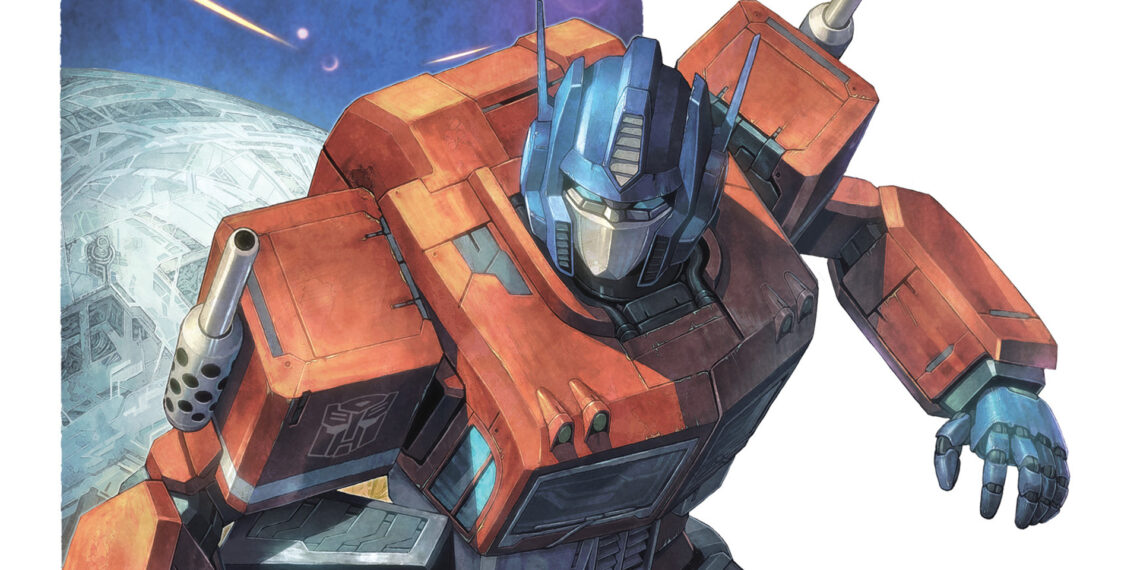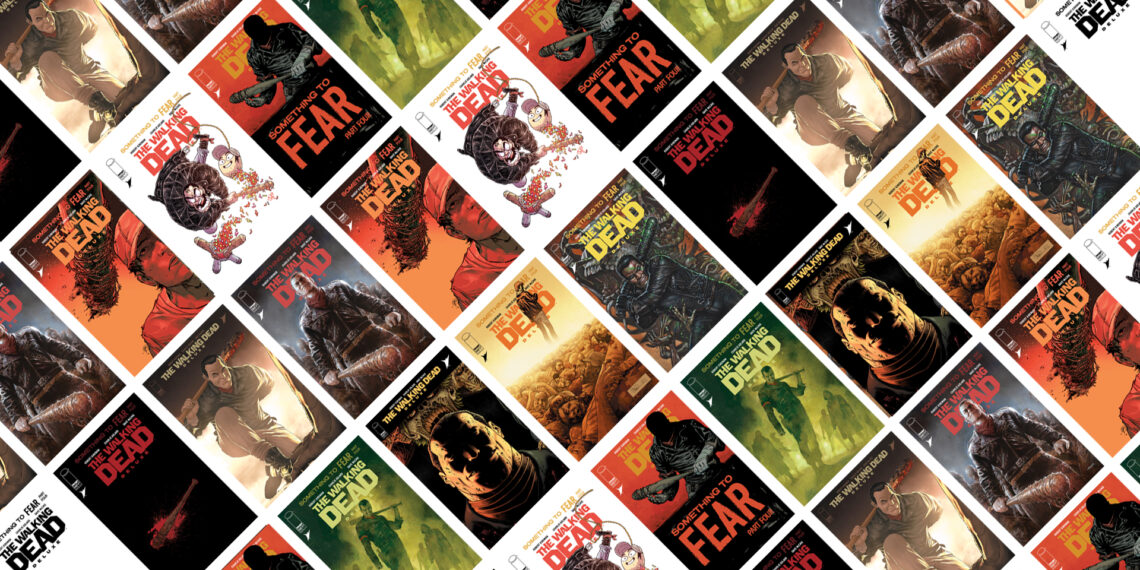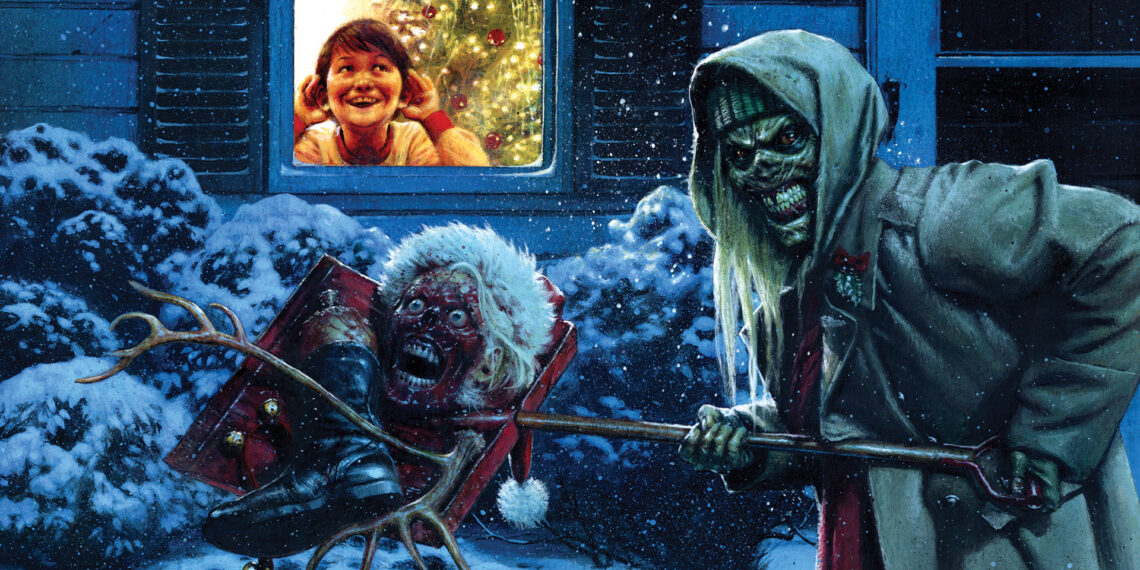An Eisner Award-winning artist who represents everything fun in comics today, Erica Henderson first made a name for herself on Marvel’s The Unbeatable Squirrel Girl. But her subsequent work – on Image’s Dracula, Motherfucker!, on Skybound’s Assassin Nation, and on her latest book, Penguin Random House’s Danger and Other Unknown Risks – has made her a favorite of indie comic fans as well. To cap our series of interviews celebrating APIDA Heritage Month, we sat down with Erica and discussed her past, present, and future comics…
When did you first fall in love with comic books?
I’d always wanted to do art in some kind of way, and comics were always around. My dad was a writer, and we always had a lot of different kinds of comics in the house. A lot of people had that thing where it’s like, “This was my first comic,” and I have no idea what it was. Because they were just literally in the house. They were just there.
So that was something that I had wanted to do. But there was a lot of pressure, especially from my mom’s side, where she knew she wasn’t gonna win the “I wanna be an artist” fight, but she definitely said, “You gotta go to school and you gotta do something that’s gonna make money.”
So I went to school for film and that just wound up reinforcing the fact that I didn’t wanna work in film, but I did enjoy visual storytelling. So I got out of school, and I went into video games because that was what was available. It was a job that I could do.
I started doing comics on the side. I was doing them at night, and I just started doing more and more of it. The art thing was always there. The desire for storytelling was always there. And it was just a winding path back to where I’d already started.
What was the transition point to becoming a professional comics artist?
At first I was just doing stuff and putting it online. These were the early days of Blogspot and Tumblr. Just seeing what kind of audience I could build. I wasn’t quite sure what I was doing, like anyone just posting stuff online. There was less of a hustle culture in 2008, around there. So you’re just sort of like tossing things out and seeing what happens.
I was doing that. I was doing the day job, which was video games. And I started picking up freelance work on the side. I like did some covers for local magazines. Then I started going to conventions. I was meeting people and getting to know them, and then I was getting little bits of comics work.
I remember it was at one New York Comic Con… This was at a point in my games career where I was being set up to become art director, as the art director was leaving. So I had a job that paid me well and was gonna pay me even better soon, but I wasn’t that excited by it. And at this New York Comic Con, Andy Khouri, who was an editor at DC but at that point was editor in chief of Comics Alliance, was like, “So are you gonna do this comics thing? What are you doing here?” I was like, “I don’t know. I don’t know. It’s hard to turn down healthcare.”
Then our entire studio was shut down. We were laid off. I was like, “Well, I guess I’ll try this comics thing.” That’s when I made the big push. I was like, “Well, I’ve got this severance package.” I canceled Netflix and anything that I didn’t have to spend money on and thought, “Let’s see how long I can make this last.”
So it worked. It was two years between that happening and Squirrel Girl. Since I live in the Boston area there’s like a thousand MIT and Harvard people starting little companies, so there were plenty of little game jobs that I could get ahold of. I was supplementing it with “Hey, I’ll come in for a month or a couple weeks to do stuff.” Things like that.

It’s amazing you went from games to a book as strong as Squirrel Girl, where it felt like both writer [Ryan North] and artist were simpatico and in complete command of their craft. What informed your narrative sense?
It’s a thing that I think about a lot. To the point where I have been told by more than one person after I go on a very long talk about minutia that I should be writing an Understanding Comics style book. Just because it’s very important to me that everything makes sense and that it’s easy to follow. So I wind up thinking, “Okay, why did this work? Why did this not work? Why am I doing what I’m doing?” It’s a thing that I think about. I’ll naturally do a thing and then be like, “Okay, why did I do that?” I think that wound up happening more so because I was asked to give a talk on something and I was like, “Oh, I need to consider this now.”
Then after that one talk started, I went down this whole path of “Okay, what does all of this mean? Why are these things set up like this?” I don’t know. I think it’s just me. I like to know why things work, and since this is the thing that I do all the time, it’s important to me that I really know how this works.
Despite, or perhaps because of, that self-reflection, there’s a wonderful spontaneity to your work. At the same time, there’s a steady intelligence behind it, a reassurance it won’t get too chaotic. It’s organic in the best sense of the word.
I think there’s a couple of things. One is that I definitely will fight to add little moments. So if there’s a lot of text in an area, I’ll break it up into three or four panels. With comics, you’re reading a series of images, and so each one of these panels represents a moment in time. When that moment changes, you wanna represent it. If you’re giving a monologue, that’s more than one moment. Because yes, the text is important, you wanna know what the person’s saying, but we’re telling a story.
Telling a story isn’t just reading a speech in a Stephen Hawking monotone. You wanna know what the person’s feeling in those moments. So if you break that up, it becomes something else. Because you can show four different emotions or a pause in the middle, and that pause will change things.
Like, someone stops in the middle of a speech and it means something to you. As opposed to here’s a wall of text and a drawing of a guy with his mouth open. All that tells you is a guy is talking, which you already know because there’s a word bubble. So you need to know why that guy is talking, what he’s feeling when he is talking. That’s our part of the work. So I feel like it’s a disservice to just show the guy talking.

After Squirrel Girl you partnered with writer Kyle Starks on Assassin Nation. How did you two come to work with Skybound?
We had been talking about doing something together for ages. I think it was like six years at that point. But with these sorts of long projects, you have to really find that one moment when the stars align and you both have some time, when you can say, “Oh, we can start something new now and do it together.”
I think it was Kyle who had a very short pitch as to what the idea was, and we just went from there. It was the elevator pitch for the book — the world’s former greatest hitman has now hired the current 20 best hit men in the world to be his bodyguards. Kyle and I like each other’s work. So it was a pretty easy thing for us to get into. We had both individually been talking to Jon Moisan, the former editor at Skybound. So when we found a project we wanted to do together, we were just like, “Hey, Jon, you know how you were talking to both of us? Well, we have something for you, together.” [Laughs.] So it came together pretty easily, because we had all individually been talked to each other one-on-one about doing something. It didn’t take very long from Kyle and I saying we wanna do something until we were starting actual work.
Kyle has a very strong idea of what he wants to do, which in this case was fine because I like his joke sense. Because he’s also an artist, he has a timing sense as well. So for this project, it was kind of easy to just sit back and throw suggestions out. I was part of the character creation as well, because, as I said, there’s over 20 characters in this thing. So that was just a lot of us spitballing to see what would be fun…

How did your new collaboration with Ryan North, Danger and Other Unknown Risks, come to be?
The genesis of the new book was that I had a contract with Penguin Random House with someone else, and that person flaked for two years, and Penguin let me keep my contract and bring them a new book. Then I said, “Hey, can I bring in Ryan?” They said, “Great.” So suddenly we had this contract with Penguin Random House, and we had to come up with a book. Which is a thing that never happens. [Laughs.] You don’t just have a contract and no pitch.
So that was a lot of us sitting around on the phone trying to figure out what it would be. We were throwing everything against the wall and we would talk through it a little bit. The seed that this project grew out of was from every single thing that we were talking about. Ryan would say, “There’s a talking dog.” But that element didn’t quite work. So we said, “Okay, let’s start with the talking dog. We’ll figure out a world and a story in which that’s an option… It was an interesting process because we came up with everything together and then we just sort of passed the script back and forth.
We did major rewrites. As it went along, the rewrites got smaller and smaller. But early on we were just like, “Okay, no, this is what I’m seeing” and then changed something entirely.
Ryan did the first draft. Then when I sent him one back, it was like, “Okay, that character doesn’t die. They’re here now. They stay with the rest of the story. They’re a main character now, and then this happens.” Then Ryan sent it back and was like, “Okay, well that character is no longer part of a love triangle, and now their gender has changed.”
So it was this insane thing that I don’t think anyone ever does. Partly because most people don’t like it when someone else crosses out what they did and writes their own thing. But we at this point, we trust each other enough that we were able to say, “No, no, no.”

What are you working on now? Could we see a sequel to the new book?
We have talked about it a little bit. Until the strike happened, we were pitching it as a TV show. We need to figure out where else the story could go. We have a broad outline of what more story would be, but we’re not working on it right now because we’re not crossing any picket lines. But I’m working on a book with Tze Chun over at TKO Studios. Speaking of the WGA, he’s out there picketing right now. [Laughs.] It’s still in layouts, because we signed the contract not long ago.
Oh, I also have Parasocial coming out [this October] with Alex de Campi at Image! I’ve finished working on it, so it’s just completely gone from my head. [Laughs.] If you liked Dracula, Motherfucker! it’s the same team. It’s a spiritual successor, a horror story. But this time it’s dealing with different types of power dynamics in a horror story. It’s a book about how we present ourselves, the lies we tell ourselves and each other, and what’s more real – the reality or the lies.

























